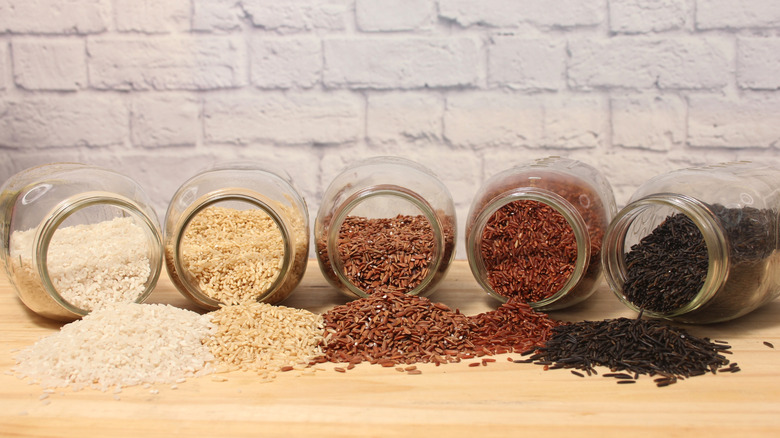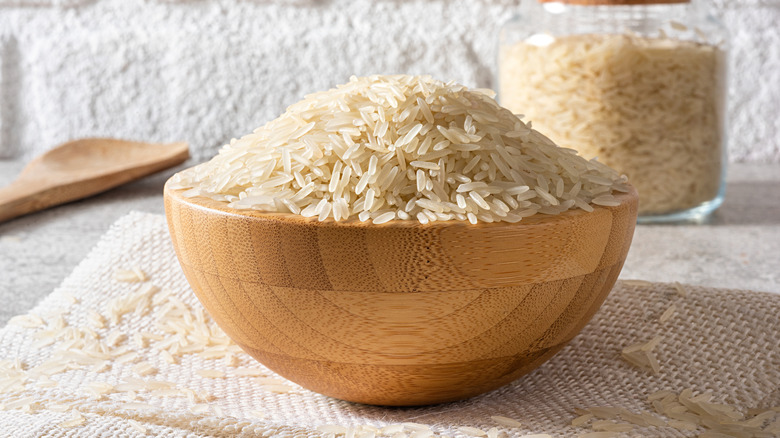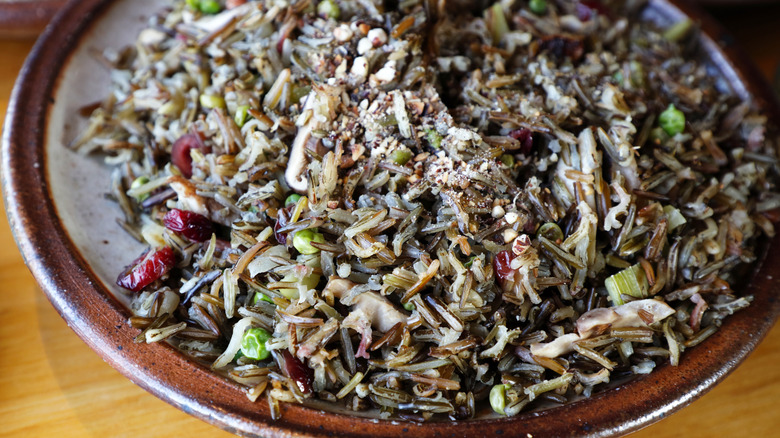Why Wild Rice Isn't Actually Rice
It never ceases to amaze me how you can be around something your entire life — work with it, cook with it, consume it — all the while being none the wiser to its true identity. Wild rice isn't actually rice? I came across this bombshell discovery by happenstance and I've been gob-smacked ever since. If true, then someone tell me why it sits on the same grocery store shelf as white, brown, basmati, and literally all of the other types of rice. It's wildly misleading!
In spite of its name, wild rice is actually a semi-aquatic grain harvested from a species of grass which grows in shallow waters. Its long, slender shape and chewy texture are virtually indistinguishable from traditional rice, which is why it's often grouped with the other grains. Wild rice stands apart, both nutritionally and botanically, offering a unique flavor profile and a nutty taste to boot. If you've ever wondered why it's called "wild" or why it doesn't quite cook like regular rice, we're in the same boat.
Not rice, but still wildly delicious
Wild rice comes from a genus of grasses called Zizania, which grow naturally in North American freshwater lakes and rivers. Actual rice is cultivated in paddies — quite different from wild rice. Since it grows in the wild, harvesting it is a bit more labor-intensive. If we're talking about looks: its grains are longer, darker, and chewier than white or brown rice, with a flavor that's earthy and nutty. That's a stark contrast to the milder taste of conventional rice varieties.
One of the reasons wild rice often gets grouped with rice is because of how it's used. It cooks similarly (a bit longer, to achieve a certain texture) and pairs beautifully with proteins and vegetables in both soups and salads. However, its texture is heartier and holds its shape well, making it a favorite for dishes that need a bit of bite. If you've never cooked with wild rice, it's worth experimenting with to experience its rich, satisfying flavor. But since it has such a distinct taste and texture, you have to learn how long to cook it if you want to soften it up. All the years it took you to learn how to make perfect rice won't help you here since the texture is so different from traditional rice.
Wild rice is a nutritional powerhouse
Aside from its culinary appeal, wild rice is a nutritional overachiever. While it mimics rice in appearance, its health benefits often surpass those of its conventional counterparts. Wild rice is higher in protein and fiber, making it a great option for those looking to add more plant-based nutrients to their meals. It's also packed with essential vitamins and minerals like magnesium, zinc, and phosphorus, which support everything from bone health to energy production.
Another bonus? It's perfect for anyone with dietary restrictions. Wild rice is naturally gluten-free, so feel free to go crazy on National Gluten-free day. Its nutty flavor and firm texture also make it ideal for yummy grain bowls, delicious stuffed vegetables, or simply as a stand-alone side dish. Maybe you're looking for a healthier alternative to rice or just want to try something new. Either way, you can't go wrong with wild rice — it brings a unique twist to the table.


